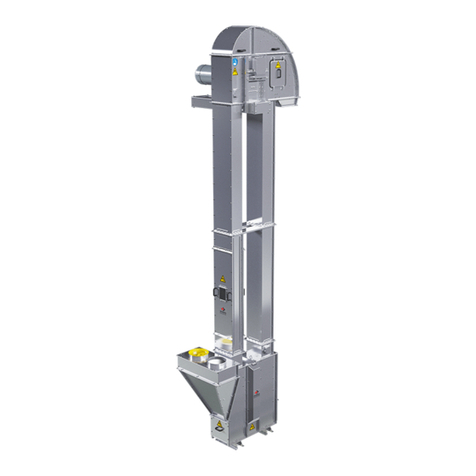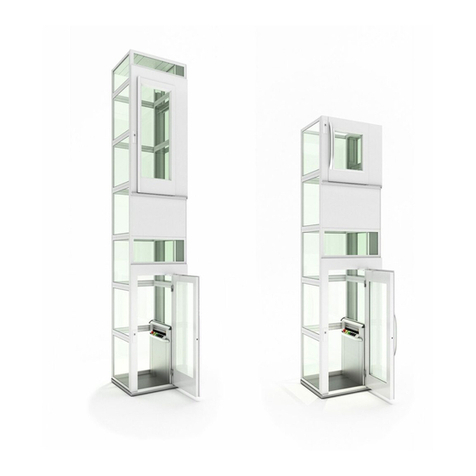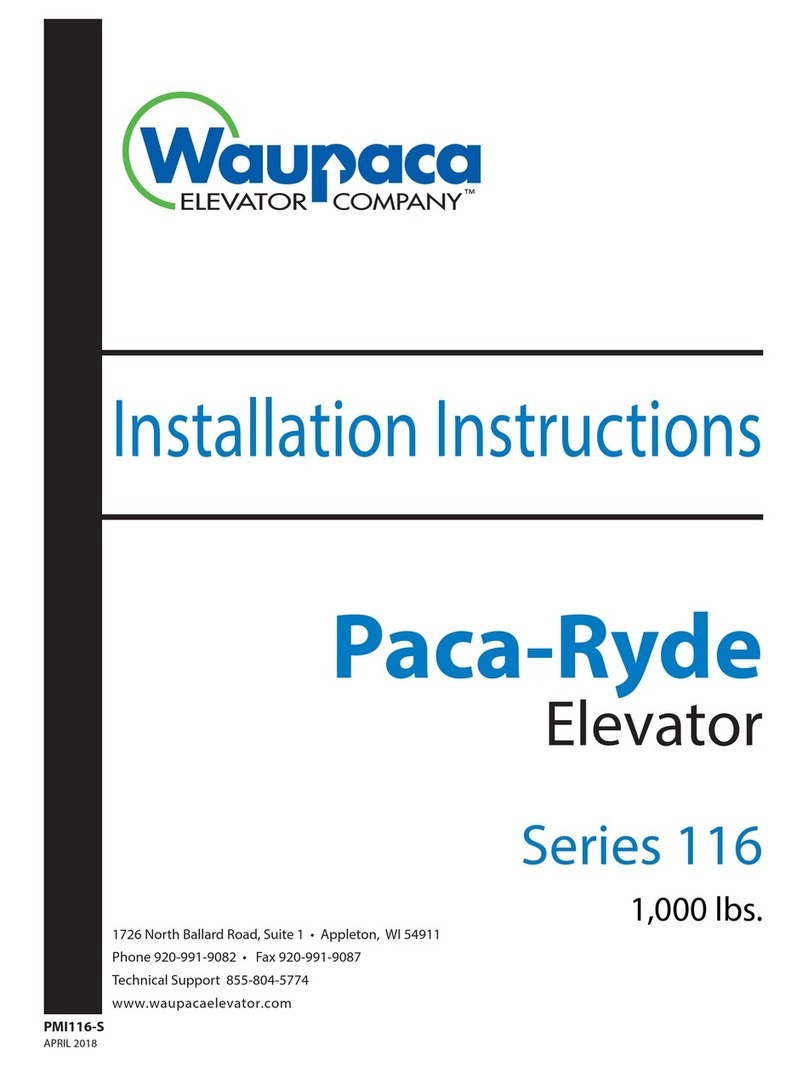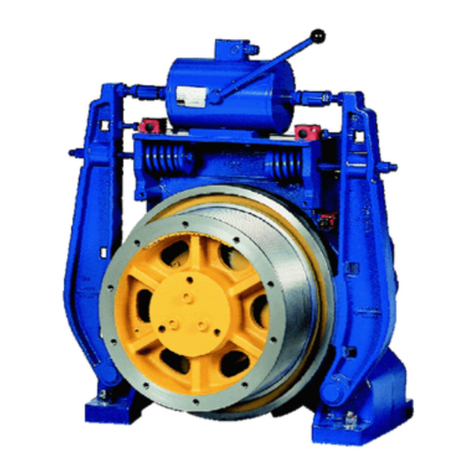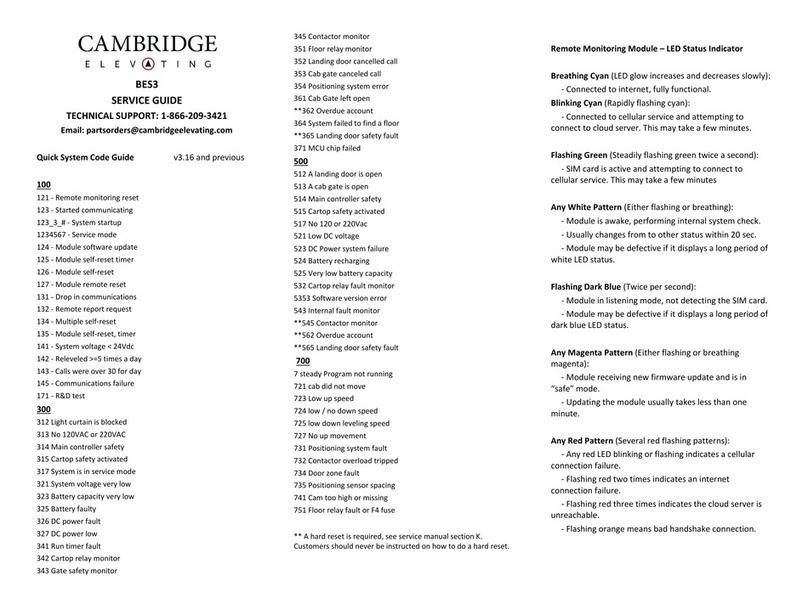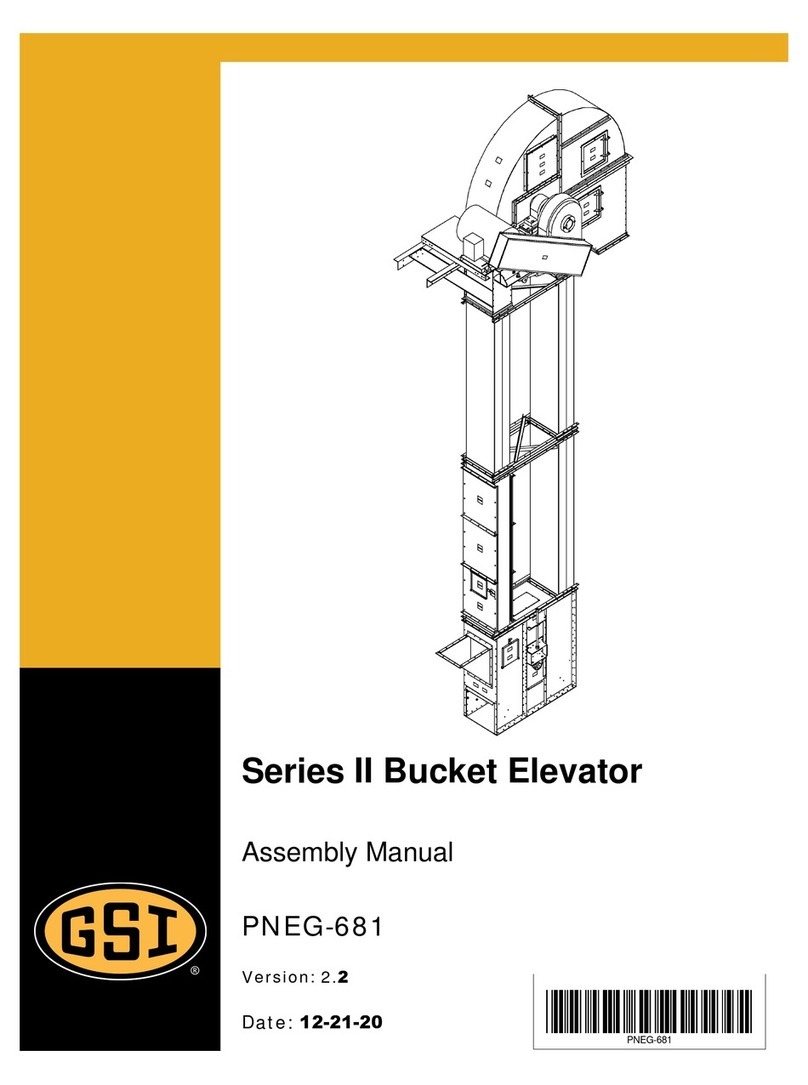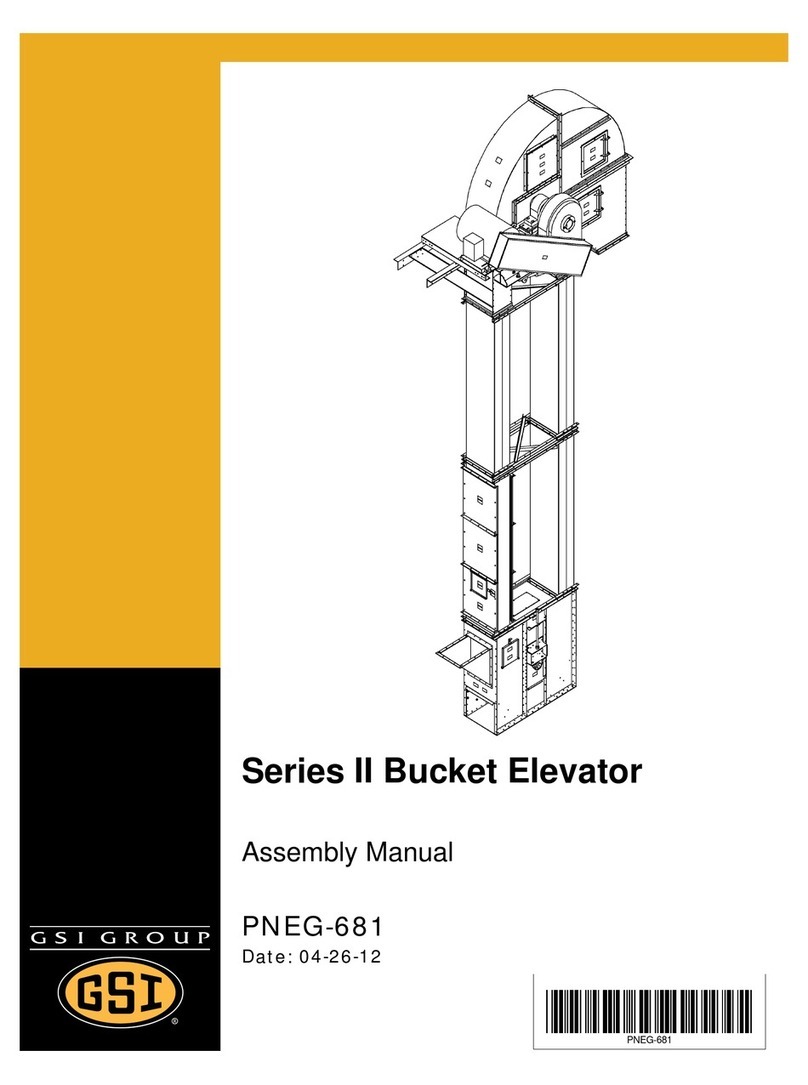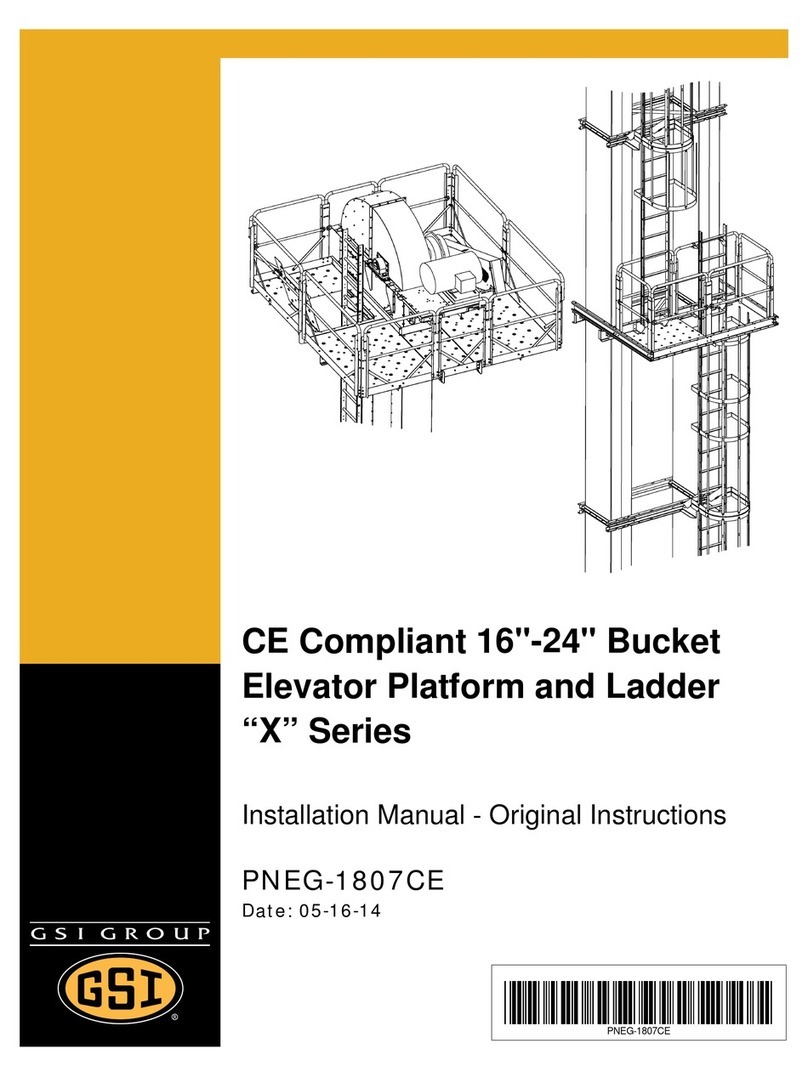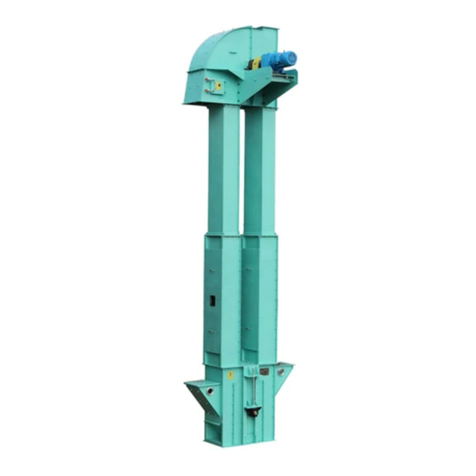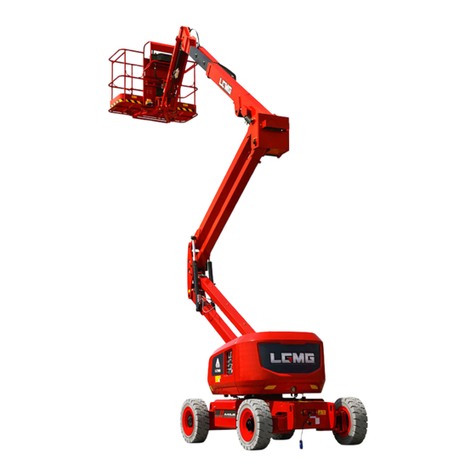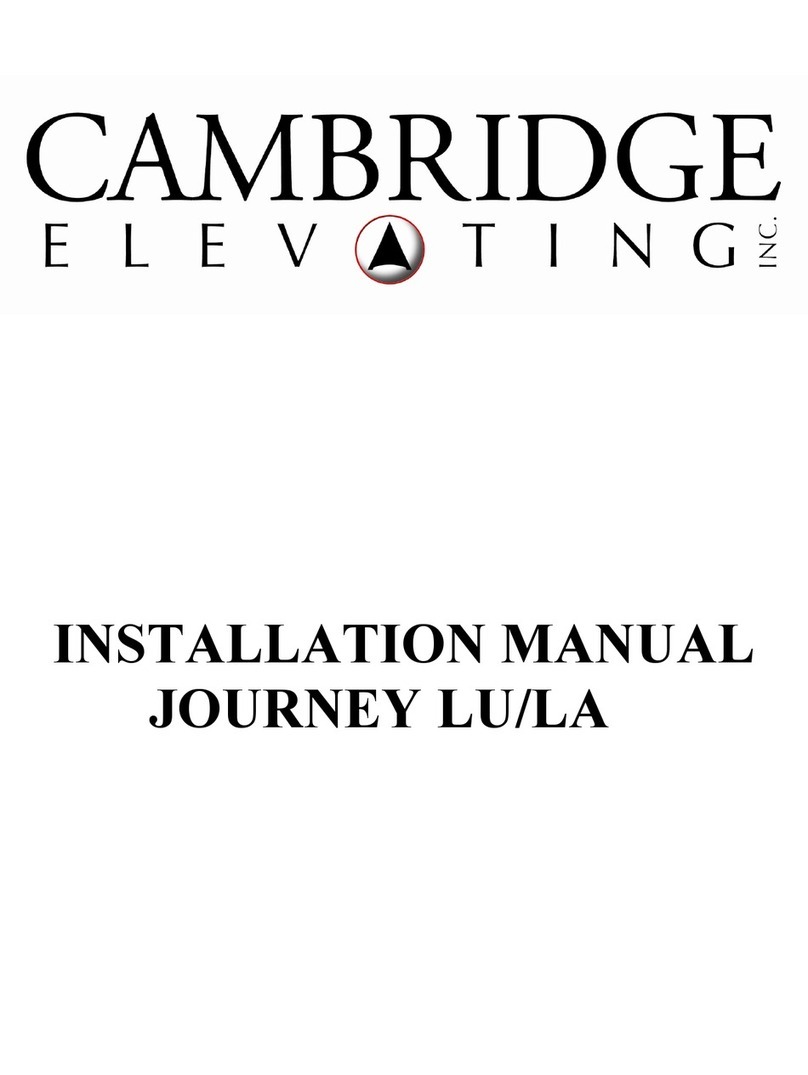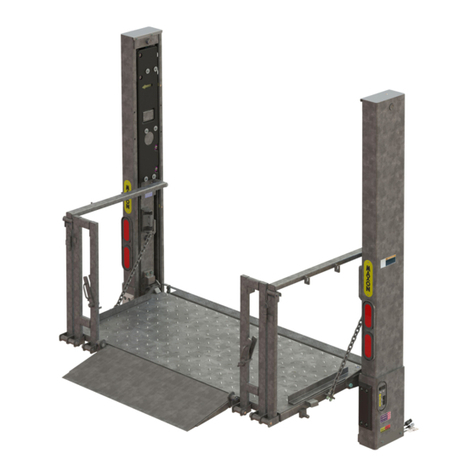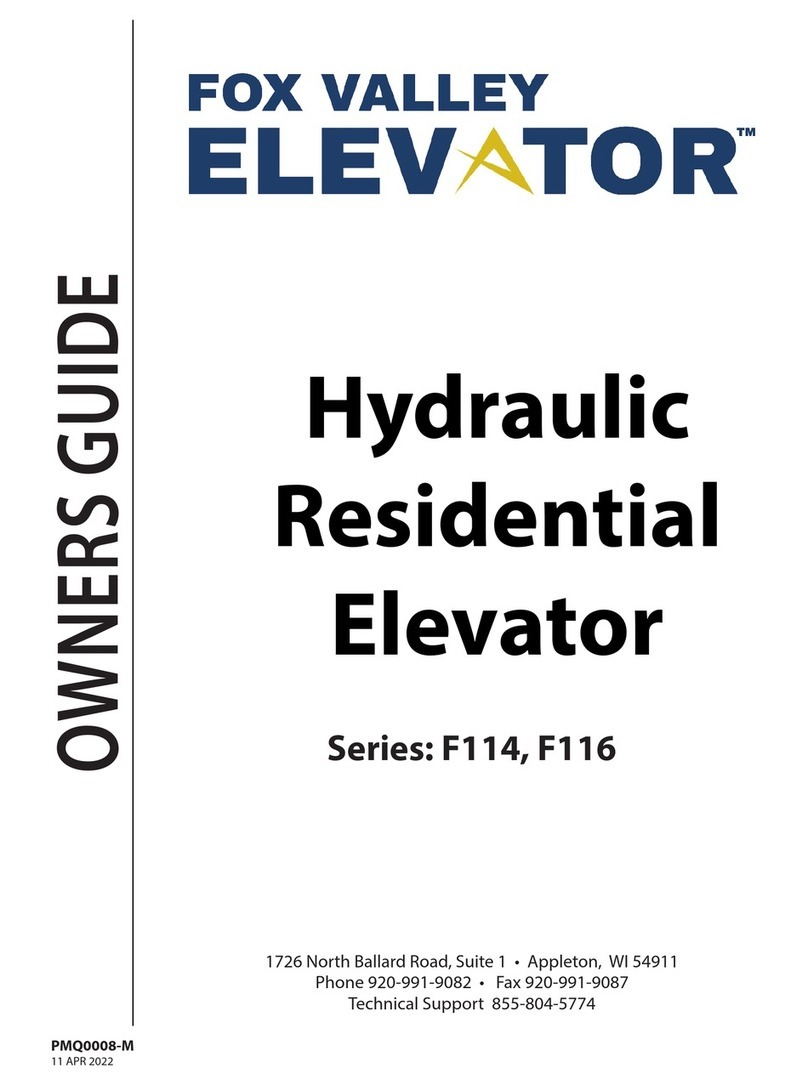
1
TABLE OF CONTENTS
I. Safety Information....................................................................................................................................................3
II. Installation & Startup...............................................................................................................................................5
2.1 Receiving Inspection................................................................................................................................5
2.2 Pre-installation Preparation.....................................................................................................................5
2.2.1 Elevator Foundation.............................................................................................................................5
2.2.2 Elevator Guying Or Bracing .................................................................................................................6
2.2.3 Elevator Intake.....................................................................................................................................7
2.2.4 Elevator Discharge ..............................................................................................................................8
2.2.5 Positioning Trunk Sections For Ladder................................................................................................8
2.2.6 Elevator Belt Selection.........................................................................................................................8
2.3 Elevator Erection (Assembly) .................................................................................................................9
2.3.1 Vertical Assembly ................................................................................................................................9
2.3.2 Belt And Bucket Installation ...............................................................................................................17
2.3.3.1 Belt/Bucket Installation ...................................................................................................................19
2.3.3.1.1 Method 1; Simultaneous Belt And Bucket Installation;(Less than 100 Ft)...................................21
2.3.3.1.2 Method 2; Belt Only With Buckets Attached After Splicing Belt...................................................22
2.3.4 Belt Splicing .......................................................................................................................................23
2.3.5 Hood Installation .................................................................................................................................23
2.3.6 Drive Installation ................................................................................................................................23
2.3.7 Initial Belt Tracking (See Figure 2.15) ................................................................................................24
2.3.8 Rubber Throat Slide Adjustment........................................................................................................28
2.3.9 In-Service Belt Tension......................................................................................................................28
2.3.10 Elevator Bucket Filling .....................................................................................................................29
III. Maintenance ......................................................................................................................................................32
3.1 General Maintenance ...........................................................................................................................32
3.2 General Housekeepingand Periodic Inspection....................................................................................32
3.3 Lubrication ............................................................................................................................................34
3.3.1 Reducer .............................................................................................................................................34
3.3.2 Motor..................................................................................................................................................34
3.3.3 Head & Boot Shaft Bearings..............................................................................................................34
3.3.4 Roller Chain Drive..............................................................................................................................34
3.3.5 Sleeve Guides And Shafts.................................................................................................................34
3.4 Adjustment and Repair Procedure........................................................................................................34
3.4.1 Elevator Belt Tension.........................................................................................................................34
3.4.1.1 Boot Takeup (Belt Tension) Adjustment.........................................................................................34
3.4.1.2 Drive V-Belt (If Installed).................................................................................................................35
3.4.2 Belt Tracking......................................................................................................................................35
3.4.3 Belt Splicing .......................................................................................................................................35
3.4.4 Throat Slide Adjustment ....................................................................................................................35
3.4.5 Roller Chain Tension .........................................................................................................................35
IV. Spare Parts.........................................................................................................................................................36
4.1 Scope....................................................................................................................................................36
4.2 Ordering Parts ......................................................................................................................................36
V. Warranty..............................................................................................................................................................36
